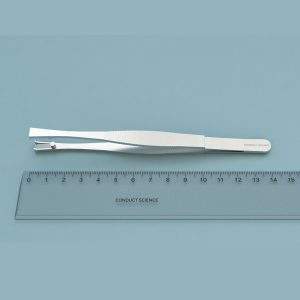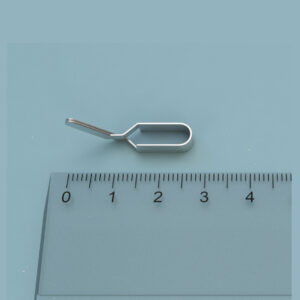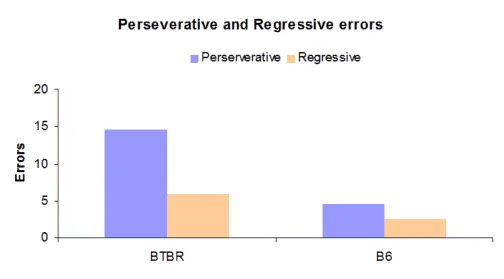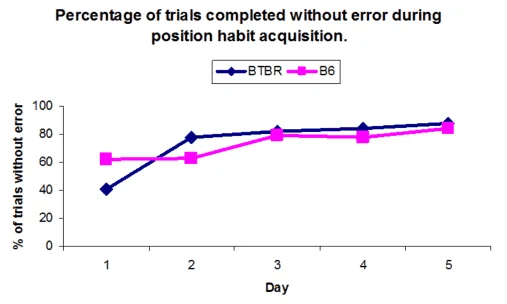The Morris Water T maze insert for the Morris Water Maze is made to fit the 4 foot, 5 foot, or 6 foot sizing for the MazeEngineers Morris Water Maze. Made of stainless steel inserts for maximum stability within a large fluid container, long term use and easy cleaning.

MazeEngineers empowers preclinical neuroscience research with meticulously designed, customizable behavioral apparatuses. From manual classic mazes to fully automated smart systems, we provide the tools scientists need to capture high-quality, reproducible data for studies on learning, memory, anxiety, and depression.


bool(false)


The Spatial Decision Maze (SDM) stands as a cornerstone in evaluating spatial cognition, including both reference memory and working memory. Its origins trace back to the late 1950s when Dember and Fowler employed it to delve into alternation behavior in animals. Another prominent tool is the Aqueous Spatial Labyrinth, conceived by Richard G. Morris in 1984. Each method boasts distinct advantages and drawbacks. Consequently, researchers developed a hybrid solution, known as the Maze T-Fluid, amalgamating the finest features of both systems.
The Maze T-Fluid (MTF) emerges as a potent tool in elucidating perseverance, a trait conventional assessments struggle to capture. Combining the swift learning curve and aquatic challenge akin to the Morris Water Maze with the straightforward design of the T-Maze, the MTF obviates the need for food deprivation. Addressing the complexities of perseverative behavior, it offers a user-friendly, high-throughput approach.
The apparatus comprises a tank housing T-shaped maze inserts. Water fills the tank to a level preventing subjects from scaling its walls. Plexiglas covers the maze’s choice arms, thwarting attempts to circumvent the designated escape platform.
Constructed of durable materials, the setup comprises a circular pool with a diameter of 45 cm housing an aluminum T-Maze. Each arm of the T-Maze spans 18.5 cm in length and 5 cm in width. Positioned within one of the choice arms, the escape platform measures 5 x 5 cm. Plexiglas rectangles cap the summits of the choice arms, ensuring subjects cannot leap out of the pool post-reaching the escape platform.
The water level in the pool is carefully regulated to reach 13 cm, with the platform submerged under 1 cm of opaque-colored water. Maintaining a consistent temperature of 23°C and ensuring ample lighting, the environment is optimized for experimentation. Scoring can be performed manually, although sophisticated tracking and video software like Noldus Ethovision XT can streamline the process.
Prior to formal training, subjects undergo a 60-second free exploration session, initiated from the start arm. No escape platform is present during this pre-training phase. The subject’s initial arm choice is recorded, and subsequent trials involve placing the platform under the opposite arm.
During training sessions, if a subject fails to locate the platform within 60 seconds, gentle guidance is provided to assist them. Once on the platform, subjects rest for 10 seconds before being removed, dried, and given a 7 to 10-minute interval before the next trial. Each day consists of ten trials, repeated over four days.
To assess position habit acquisition, subjects are placed on the start arm with the platform located in the unchosen arm from pre-training. They have 60 seconds to locate and remain on the platform for 5 seconds. If unsuccessful, gentle guidance is provided, and errors are recorded. Criterion attainment requires eight correct arm choices out of ten trials per day, sustained over four consecutive days.
Upon meeting the position habit acquisition criterion, subjects undergo reversal position learning. The platform is relocated to the opposite arm, and subjects are tasked with finding it. Guidance is provided for unsuccessful attempts, and errors are tallied. Criterion fulfillment entails eight successful trials out of ten per day.
The data collected from the task is based on the errors committed during the trials. For the training task, position acquisition and reversal learning, the following data is recorded:
In the reversal learning task, two observations can also be made:
Other data collection such as latency to find the platform, velocity, and other data specific to the investigation requirements can also be easily made. The data collected from the sessions can be visualized using graphs for ease of comparisons between groups or for analysis.


The graph below illustrates a subset of perseverative and regressive errors encountered during the initial ten trials of reversal learning training on Day 1. Notably, the BTBR mice exhibit a markedly higher frequency of both perseverative and regressive errors compared to the B6 mice, as observed in the data from Guariglia and Chadman (2013).
Here is an additional graph presenting sample data regarding the percentage of error-free trials completed during the process of position habit acquisition across five days of testing. This dataset is sourced from the research conducted by Guariglia and Chadman (2013).
Magnetoreception stands as a prevalent phenomenon across various vertebrate taxa, and the MWM plus maze emerges as an indispensable tool in exploring magnetically-driven spatial behaviors in rodents. Given the magnetic field’s pivotal role as a global reference, it’s improbable that magnetic cues don’t influence directional or spatial behaviors to some degree (Phillips et al., 2013). Thus, the MWM plus maze offers a platform to gauge the magnitude of this influence on spatial orientation while unveiling previously unnoticed roles played by magnetic cues in rodent spatial cognition.
The apparatus boasts a design meticulously crafted for precise manipulation of magnetic field alignments, ensuring the elimination of alternative cues that might disrupt magnetoreception. Furthermore, the incorporation of electromagnetic shielding effectively mitigates radio frequency interference, addressing any unexplained variability encountered in prior studies of magnetic compasses regarding spatial behavior. The straightforward and minimal training regimen required for the MWM plus maze underscores the resilience of magnetoreception as a phenomenon.
Morris, R. (1984). Developments of a water-maze procedure for studying spatial learning in the rat. Journal of neuroscience methods, 11(1), 47-60.
Phillips, J. B., Youmans, P. W., Muheim, R., Sloan, K. A., Landler, L., Painter, M. S., & Anderson, C. R. (2013). Rapid learning of magnetic compass direction by C57BL/6 mice in a 4-armed ‘plus’ water maze. PloS one, 8(8), e73112.
| Species | Mouse, Rat |
|---|
There are no questions yet. Be the first to ask a question about this product.